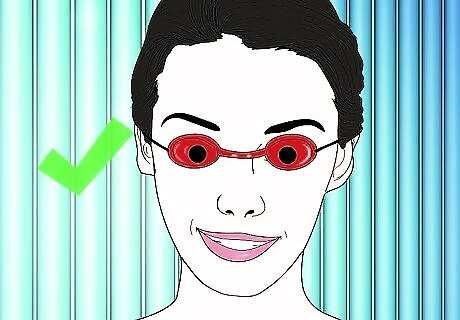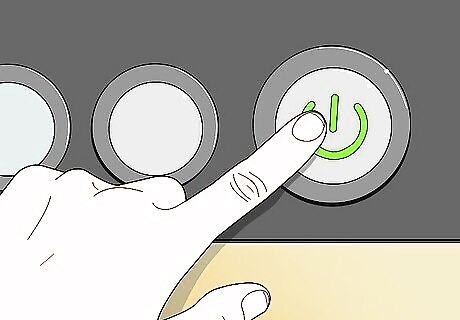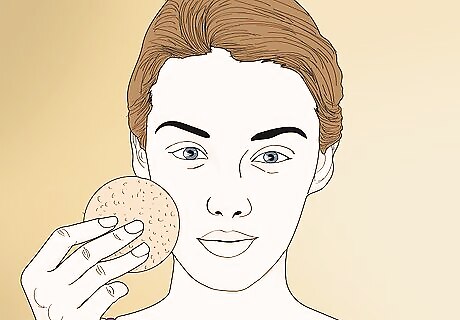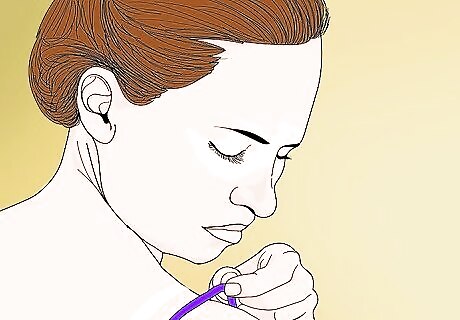
views
Setting up a Safe Tanning Session

Find a reputable location that offers stand up tanning. Stop by tanning salons in your area and ask them about the services they offer. Also search online to find the salon’s website, which will list what services the salon offers, and customer reviews. Ask to tour the salon before agreeing to a tanning session. Make sure the facility looks clean and has knowledgeable staff.

Ask about how to operate the tanning bed. During your tour, ask the attendant any questions you have. They should explain to you what button to press to turn on the lights or stop tanning early. It’s the large, circular button located on the console. The salon attendants set the bed’s timer, so you won’t need to know how to do that yourself.

Take the skin type survey before your first session. When you first sign up, the staff will have you fill out some basic information. The form generally ranges from 1, the lightest and easiest-burning skin, to 6, the darkest skin. The attendant will use this information to time your sessions so you don’t burn. If the salon doesn’t offer a survey, you’re better off going somewhere else.

Research any medications for photosynthetic reactions. Before tanning, make sure your medications won't make your skin more sensitive to sunlight. Search online to find a list of medications that can lead to negative effects while tanning. Also let the salon attendant know about your medications. For example, NSAIDs such as Motrin and Advil can lead to negative effects when mixed with tanning beds.

Avoid makeup or deodorant when tanning. Wash these products off before stepping into the tanning bed. Some makeups and perfumes may contain ingredients that make your skin more sensitive, leading to burns. Deodorants tend to include SPF, which interferes with tanning.
Entering a Stand Up Tanning Bed

Put on goggles before getting into the bed. Goggles protect your eyes from UV ray damage. Most of the time, the salon will offer you a pair, sometimes at a small fee. You can also purchase your own pair of goggles, but they have to be labeled specifically for use in tanning beds. Don’t worry about getting “racoon eyes.” The goggles will be so small they only cover your eyes, meaning the skin around them will get tanned.

Take off your clothing. Many clients choose to tan in a swimsuit or underwear. To get the most even tan, you may wear nothing at all. It’s your session, so it’s up to you. Usually, you will be alone in the tanning room, so you don’t need to worry about anyone seeing you. Most stand up beds are enclosed, although some may be open on all sides.

Stand in the bed's center and spread your legs. Step into the tanning bed, shutting the door behind you, and walk to the center. Some beds have X's on the ground to show you where to stand. Spread your legs a little so the light hits them evenly on all sides. Stand up beds are actually booths, or small rooms. This is perfect for anyone who doesn’t like the claustrophobia of regular tanning beds.

Press the button on the console. The console will be inside the booth on the wall. Look for a large, circular button. When you’re ready to begin tanning, press the button to turn on the lights. The lights stay on until your tanning time is up or you press the button again. The tanning time is set by the attendant, so you won’t have to set it yourself.

Raise your arms over your head to get an even tan. Some tanning beds have bars on the ceiling or wall. These are for you to hold onto so light hits your underarms. If these handles aren’t there, hold your hands up to get your tan as even as possible. Remember that you can move freely in a stand up bed, so adjust your pose to get the tan you want. To prevent yourself from getting tired, hold up your arms for half the time. Watch the console or count to yourself to figure out how much time you have left.

Keep tanning sessions 4 minutes or less at first. The salon attendant will discuss the best option for you. Most initial sessions last about 4 minutes, but it’s better to make them even shorter if you’re prone to frying like a fish. Whenever your skin starts to feel hot and uncomfortable, press the stop button on the bed’s console and end the session early! Gradually increase the time as your skin adapts and you learn how much light your skin can take before it burns. Most clients won’t tan in a single session. This is completely normal.
Maintaining Your Tan

Avoid using tanning lotion or pills. Be aware of any lotions or pills, including those containing tyrosine. Currently, there is no evidence showing that these work and none of these products are approved by the government. Many tanning salons sell these products. Resist the sales pitch and, if you have to try the products, pick up cheap versions from any general store.

Shower at least an hour later with lukewarm water. After sweating so much, you’ll feel gross, but wait an hour before jumping in the shower. While an immediate shower won’t ruin your session, it will wash off any products you applied and slow the spread of the tan. Hot water does this too, so keep the temperature low.

Apply a skin moisturizer after taking a shower. Rub a moisturizer into your skin at least once a day every day. This will keep your skin smooth and elastic, so your tan won’t fade as fast as it normally would. Avoid oil-based moisturizers since they make your tan look worse. Read the moisturizer’s label to find out if it is oil-based.

Exfoliate once a week with a brush or sponge. Get a body brush or exfoliating sponge and use it to scrub away old skin cells. Be very gentle, since you don’t want to wear away your tan. Take care of any rough or patchy spots that cloud your tan and keep the tanning bed light from sinking in evenly.

Drink plenty of water to stay hydrated. Without water, your skin flakes more and loses its glow. Keep a water bottle on hand and reach for it whenever you’re thirsty. Have some water after tanning to replace what you sweat out.

Tan up to 2 times per week. Give your skin at least a day or 2 to rest before tanning again. Return to the salon on a different day to keep your tan fresh and even. Limit your sessions to protect your skin. Burning is not tanning. If your skin burns, let it heal and decrease the amount of time you spend in the bed next time.
Stop tanning when you notice sunburn or other health issues. Not only is sunburn painful, but it leaves your skin vulnerable to bigger health concerns like cancer. Also watch the moles on your skin for any changes in size or color. Go to a doctor if you feel sick or notice any lumps on your skin.




















Comments
0 comment